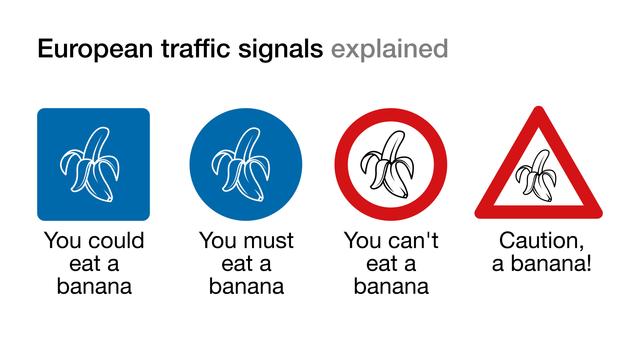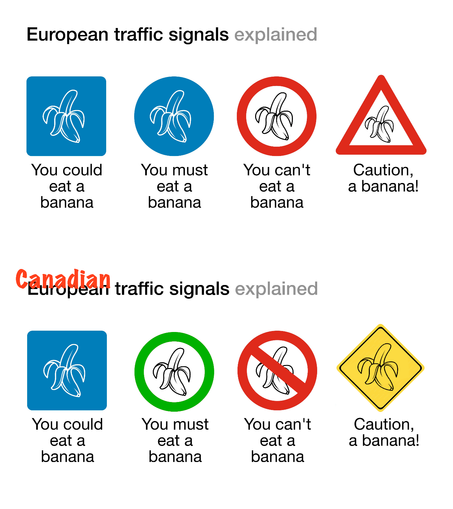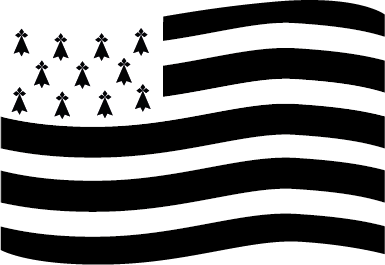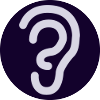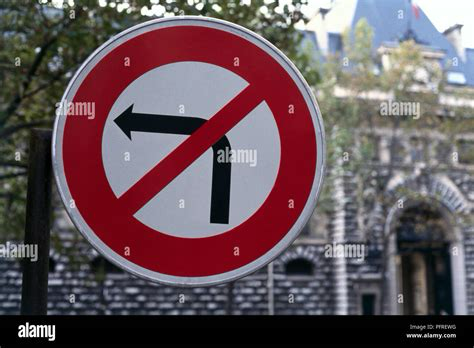https://mstdn.ca/@jubiloMX/114281156300539608
@jubiloMX @SchwarzeLocke @grishka @njsg @realsimon @danielgibert
And sometimes a banana is just a banana
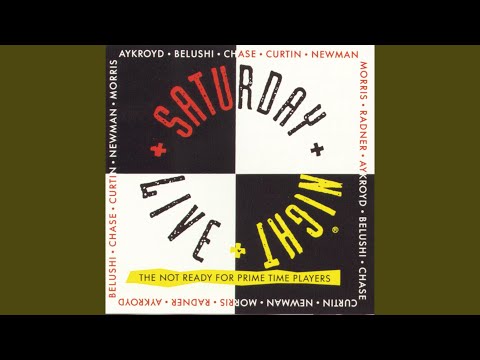
Anna Freud
@realsimon @danielgibert … Australia?
(these are barely recognisable to me, and even then, only the right-hand ones)
@buzzyrobin @realsimon @danielgibert fond memories of trundling along the Bass Highway and spotting a sign which said, in all caps, something like
"LANE MARKINGS REMOVED DO NOT OVERTAKE UNLESS IT IS SAFE TO DO SO"
which was to me a breathtaking statement of the bloody obvious, and completely oblivious to the average driver's reading comprehension while travelling at highway speed
@baz @jackeric @buzzyrobin @realsimon @danielgibert and someone needs to mention the Ogden Nash poem based on the US signs like
Soft
C A U T I O N
Shoulders
and
Cross
C H I L D R E N
Walk
@blackcap @realsimon @danielgibert IT ISN'T EVEN THE SAME THROUGHOUT THE US?
I wasn't aware if this.
(And funny, just entered Denmark via train, saw road signs next to the tracks, and thought it's interesting they are all similar in other countries. Just a few minutes after, I saw this thread and learned about vienna convention.)
@realsimon Not quite! While the EU fairly consistently uses Vienna Convention signs, Canada uses American style signs. Argentina, most of central America, Mexico and Australia use a mix of Vienna Convention signs and American signs with a few creative liberties taken with their own additions.
Also the most bizarre thing about this is the US pretty much wrote the Vienna Convention solo, then failed to adopt it.
@BalooUriza @realsimon @danielgibert Ireland, despite being in the EU, never signed the Vienna Convention and pretty much follows that approach too ("mix of Vienna Convention signs and American signs with a few creative liberties taken with their own additions").
Hence the proliferation of yellow warning signs I mentioned in a different reply.
Having lived in Spain for many years, Irish road signs seem weird to me when I go back, but of course seemed perfectly normal when I grew up with them.
@jackeric Being American, the shape is immediately recognizable for me, as it's the same aspect ratio and orientation as our speed limit signs. My understanding is Australia initially reprinted the existing blanks during the switch to metric as a cost cutting measure but I don't know why they then kept making speed limit signs on American blanks.
(FWIW it also differs from the "STOP"-sign as used in France ;-)
Yeah that's because we standardized back in 1920's, and what we standardized ON was basically whatever guerilla signage various auto clubs had been putting was most popular in the 1910’s
We tried adopting Vienna Convention signage in the 1970's but the trial was an unmitigated disaster, so instead we settled for slowly updating the MUTCD to start replacing text on signs with symbols. The only remaining vestiges of the attempt are a handful of rare signs with metric units.
We wouldn't because no one would put a banana up next to the sign for a size comparison! No we could understand those "kilos" of "meters" or whatever! 😢
hi! lots of countries don't use the vienna convention! canada, essentially all of latin america and the caribbean, australia and NZ, southern africa, among others.
just because the united states does something doesn't mean it's wrong, and also doesn't mean it's the only country on the planet that does it.
@iris @danielgibert Just to confirm my understanding... the circle around the banana is no eating a banana?
They don't put a diagonal slash through it?
What kind of driving symbols might be in the middle of the red circle?
@njsg @theklan @DamianVonBeubars @ike @iris @danielgibert
If it's a gray diagonal, it can mean "you can now eat bananas again".
A prohibition would be no cycling or no pedestrians or no smoking. And they all have slashes through them.
@peterbrown @DamianVonBeubars @ike @iris @danielgibert
A speed limit is a prohibition. You are prohibited to go faster than the posted speed. But these signs are more precisely described as a rule: "You must (not) do this"
We also have a sign that is just a red circle on a white background, which basically means "you are not allowed to drive on this road at all" (it usually comes with an additional sign for exemptions).
@peterbrown @DamianVonBeubars @ike @iris @danielgibert
I don't know about the rest of Europe but here in Portugal prohibition signals don't have a diagonal slash in the middle -- that is, the information on the original post is correct (for *traffic* signals; signals on other public spaces don't have to conform to this standard). In fact, a black and white dimmed version of the prohibition or obligation signals with a diagonal slash means the end of that prohibition or obligation.
@peterbrown @DamianVonBeubars @ike @iris @danielgibert
There are some exceptions like no parking/stopping or no turning left/right.
@peterbrown @DamianVonBeubars @ike @iris @danielgibert
See this for France : https://codedelaroute.io/blog/content/images/2022/01/Panneaux-interdiction.jpeg
You have limits with interdictions. And the ones with slashes are the end of limits
Those signs don't fall under traffic regulatios. Whoever puts them up can do whatever they like.
@ike For example a truck, a car or a bicycle.
VZ 253 in Germany https://www.bussgeldkatalog.org/wp-content/uploads/253.png
@deanerschnitzel @ike Also numbers, indicating the speed limit. Technically you're allowed to go that fast, but no faster.
(Technically technically you can go faster without punishment in order to accommodate measurement errors, but it's correct.)
